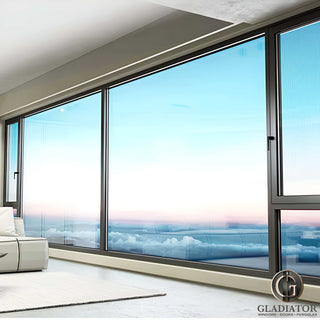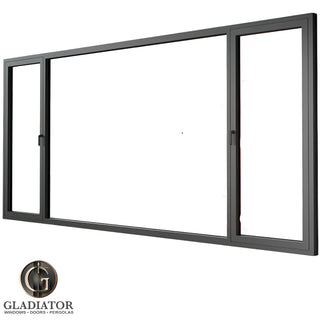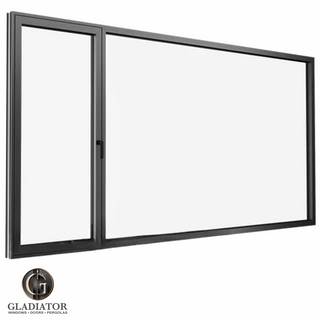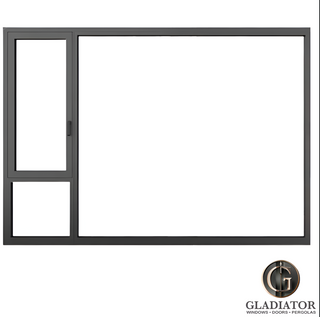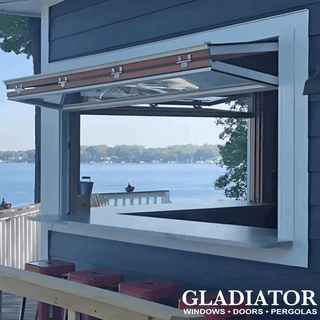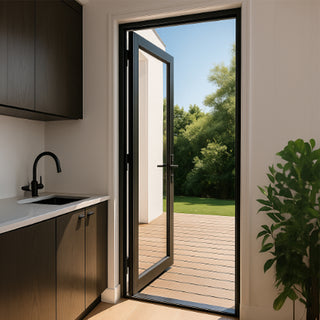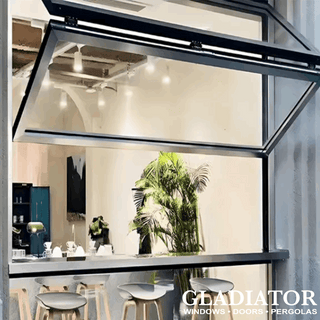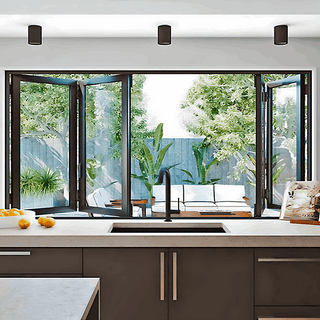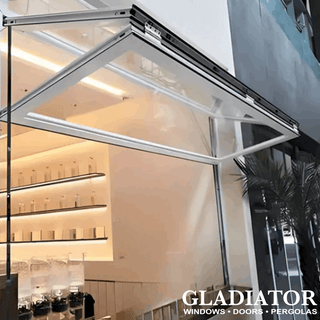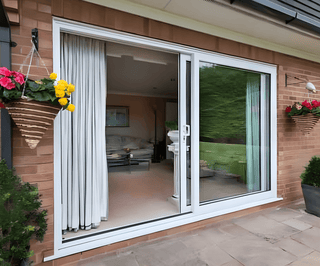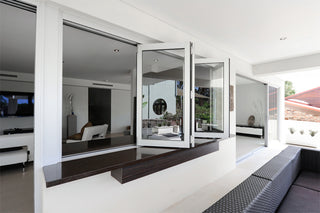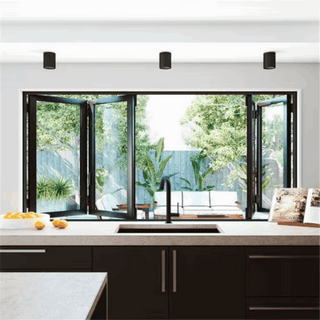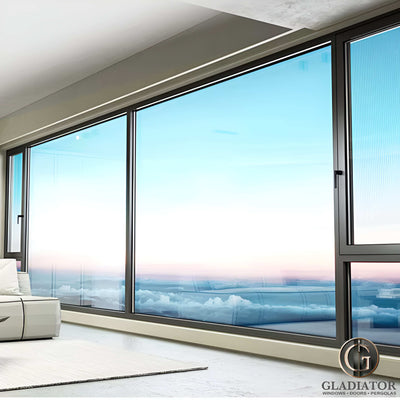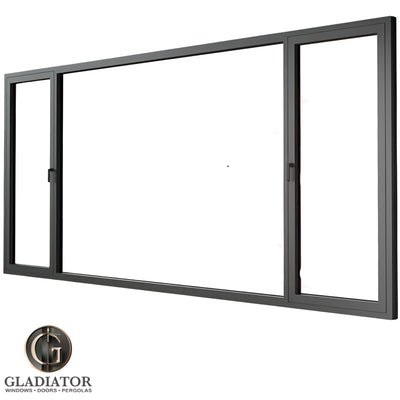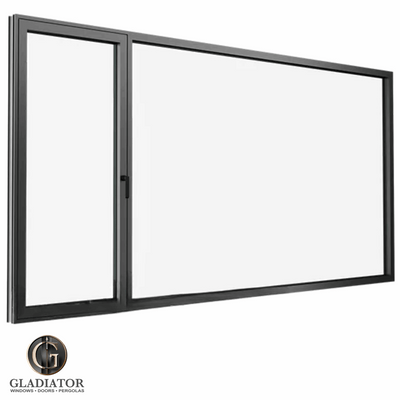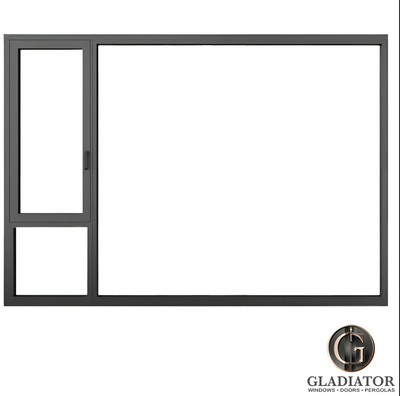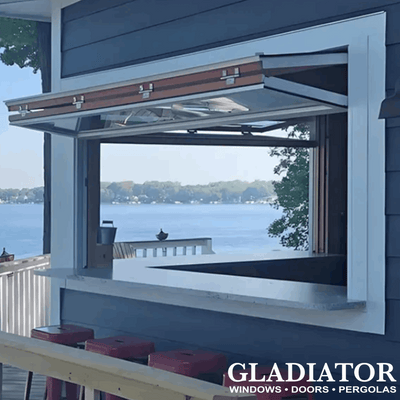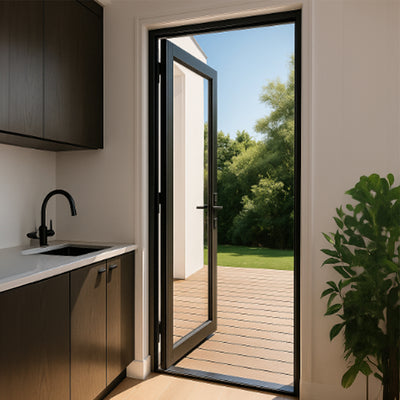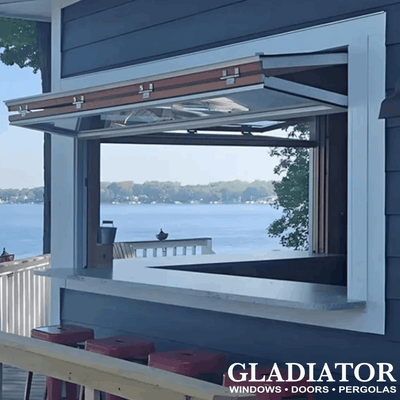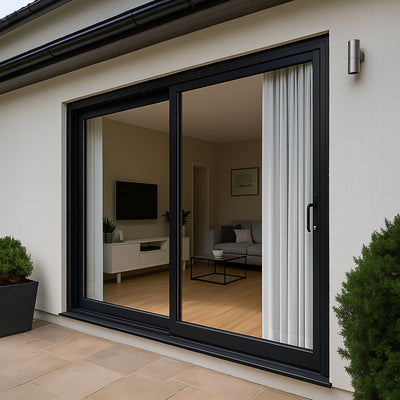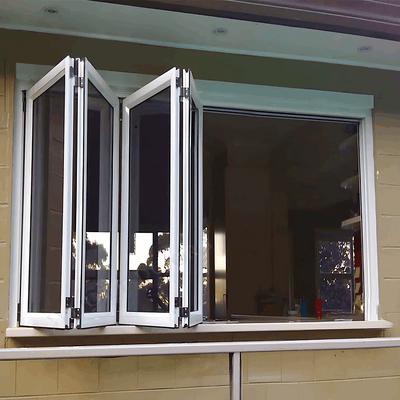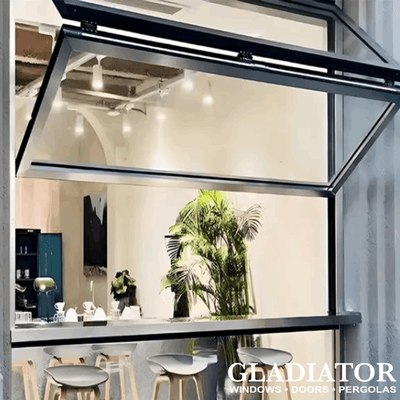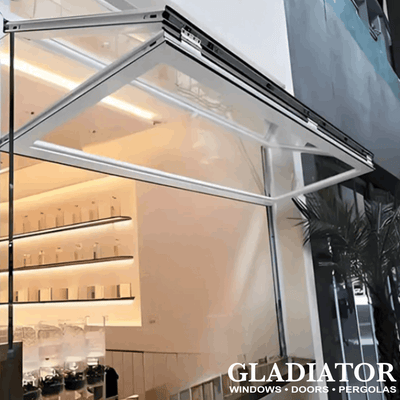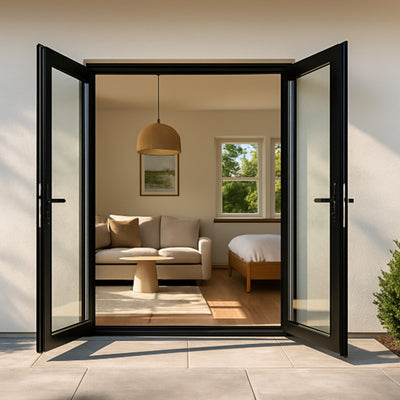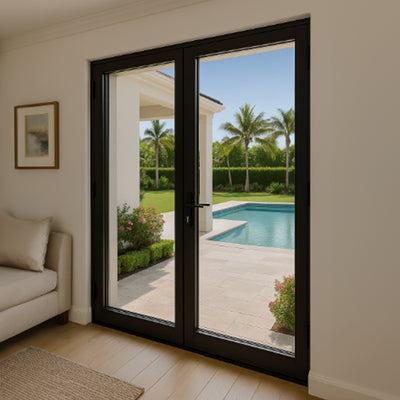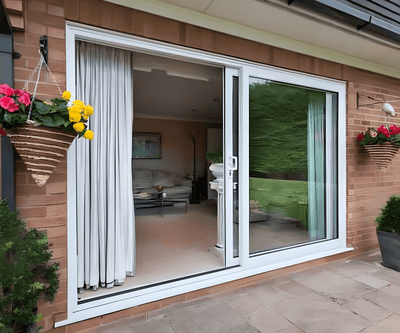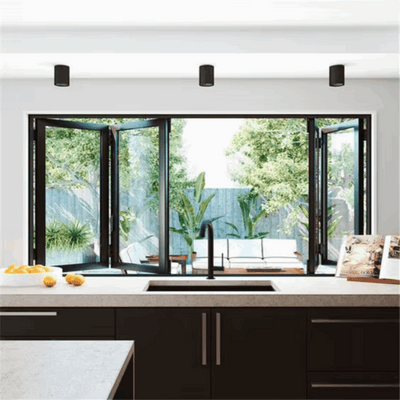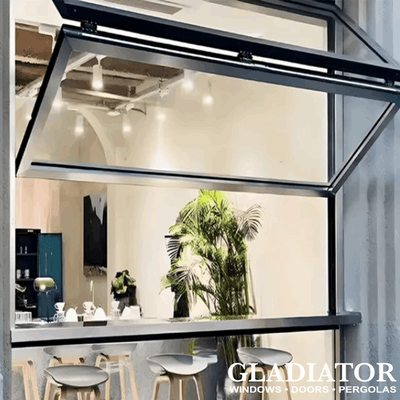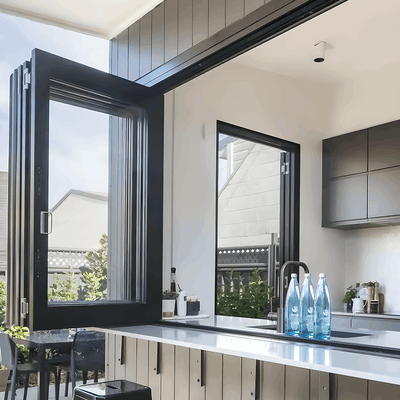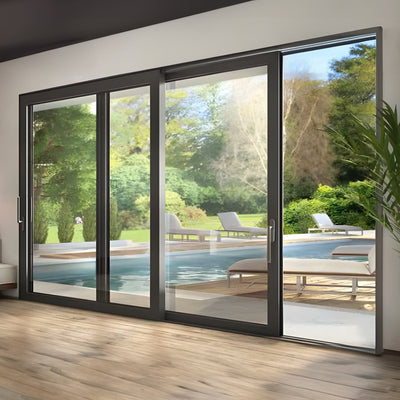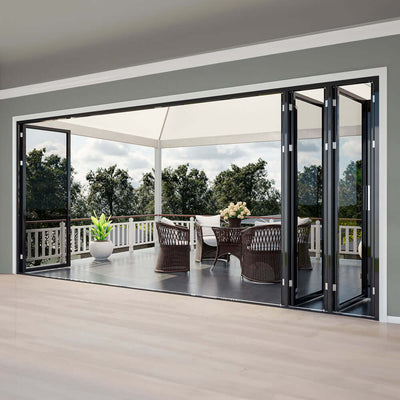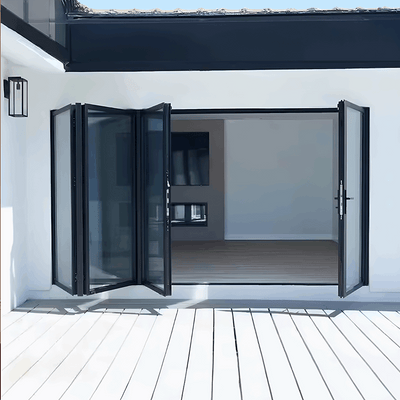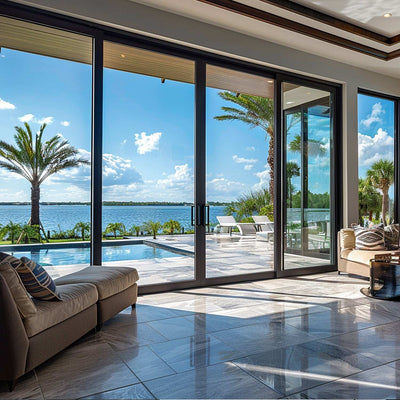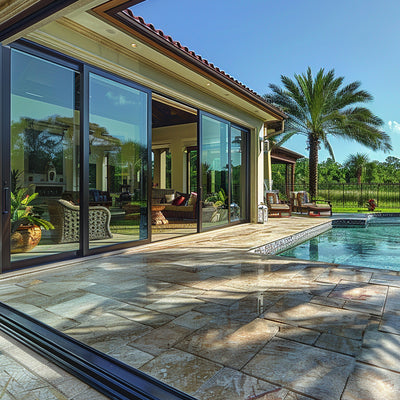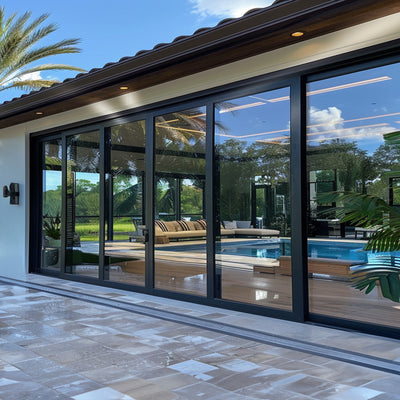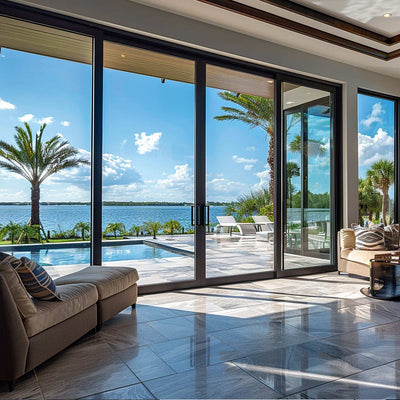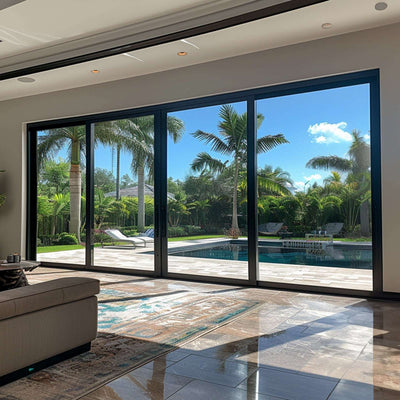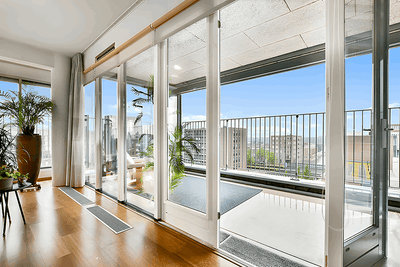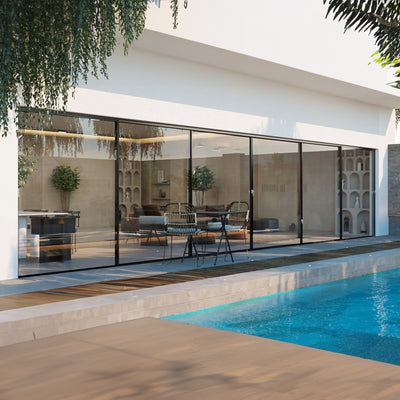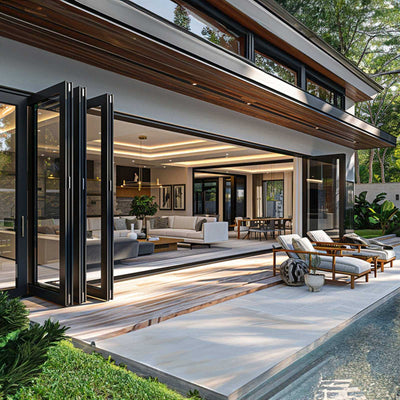Reimagine Your Views: Exploring the Latest in Contemporary Window Designs
Windows are more than just openings; they're the eyes of your home. They frame the views and shape how natural light enters a room. For homeowners, contractors, builders, and developers, understanding contemporary window design is crucial for creating spaces that are beautiful, energy-efficient, and functional. Window styles, from classic casement windows to sleek, frameless designs, have constantly evolved. This reflects advancements in technology, architectural trends, and a growing awareness of sustainability.
What makes a window design truly effective in 2025 goes beyond just aesthetics. It's about seamlessly blending form and function. It involves optimizing natural light, enhancing ventilation, and minimizing environmental impact. This evolution is driven by maximizing energy efficiency, embracing innovative materials, and creating architectural statements that complement diverse building styles.
Whether you're building a new home, renovating, or simply seeking inspiration, exploring the top 10 contemporary window design trends will provide valuable insights.
Emerging Trends in Window Design
-
Innovative Shapes: Move beyond traditional squares and rectangles. Explore arched, circular, triangular, and even custom-shaped windows to add architectural interest and personality to your space.
-
Smart Technology Integration: Smart glass technologies, automated blinds, and integrated sensors offer increased control over light, privacy, and energy efficiency.
-
Sustainable Materials: Consider eco-friendly window frames made from recycled materials or sustainably sourced wood. Look for energy-efficient glazing options like low-E coatings and insulated glass units.
-
Maximizing Natural Light: Prioritize larger window sizes and strategic placement to maximize daylight and reduce reliance on artificial lighting.
-
Connection to the Outdoors: Blur the lines between indoor and outdoor spaces with large sliding glass doors, folding windows, and expansive picture windows.
-
Minimalist Frames: Frameless or slim-framed windows create a clean, modern aesthetic and enhance the sense of openness.
-
Emphasis on Ventilation: Incorporate operable windows, such as casement, awning, or hopper windows, to promote natural ventilation and improve indoor air quality.
-
Enhanced Security Features: Look for windows with multi-point locking systems, reinforced glass, and other security features to enhance safety and peace of mind.
-
Improved Energy Performance: Select windows with high energy ratings, such as those certified by the National Fenestration Rating Council (NFRC), to minimize energy consumption and reduce utility bills.
-
Personalized Design: Work with window manufacturers to customize window styles, sizes, and finishes to perfectly match your architectural vision and personal preferences. Discover how innovative shapes, smart technology, and sustainable materials are changing how we experience our homes through strategic and stylish window implementation.
1. Minimalist Window Design
Minimalist window design has become a staple of modern architecture. It emphasizes clean lines, expansive glass, and unobstructed views. Following the "less is more" approach, this style prioritizes transparency and a seamless flow between indoor and outdoor spaces.
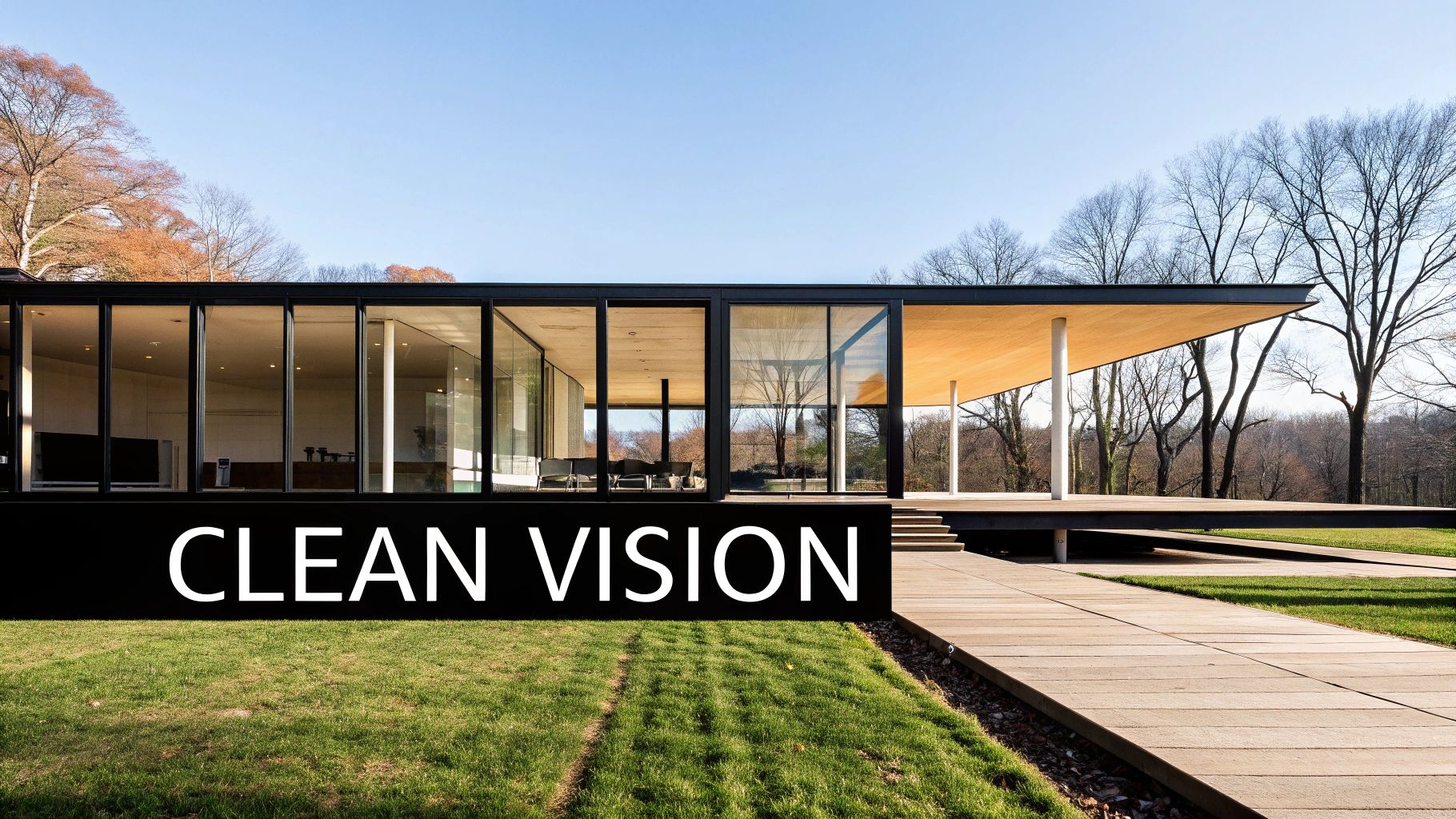
By minimizing decorative elements and using sleek, slim frames, minimalist windows create a sense of openness. They also maximize natural light. This contributes to a modern, uncluttered aesthetic that stands the test of time.
Key Features of Minimalist Windows
Key features of minimalist windows include:
- Slim, low-profile frames, often made of aluminum or steel
- Large, uninterrupted glass surfaces to maximize natural light
- Neutral colors like black, white, or gray
- Hidden or integrated hardware
Floor-to-ceiling windows and frameless corners further enhance the minimalist look. These create panoramic views and blur the lines between inside and out, giving the illusion of more space. This is a significant advantage in both residential and commercial properties.
Influential Architects and Minimalist Design
The minimalist window design philosophy can be traced back to architects like Ludwig Mies van der Rohe, a pioneer of modern architecture. His iconic works, like the Farnsworth House, showcase the minimalist ethos through extensive use of glass and structural clarity. Philip Johnson’s Glass House also exemplifies this, demonstrating the harmony achievable between a building and its environment through minimalist window design.
More recent projects, such as Apple Park with its curved glass panels, demonstrate the continued evolution of minimalist principles in architecture. Companies specializing in high-end window systems, such as Schüco and Vitrocsa, have further refined the technology behind these designs, making large-scale minimalist glazing more accessible.
Balancing Benefits and Challenges
While minimalist windows offer advantages like maximized natural light, unobstructed views, and a timeless aesthetic, they also present some challenges. Large glass surfaces can reduce energy efficiency if not properly glazed. The high-quality materials and specialized installation often result in higher upfront costs.
Privacy can also be a concern. Solutions like automated blinds or smart glass can address this. Finally, the potential for increased solar heat gain needs to be considered, especially in warmer climates.
Practical Considerations for Implementation
For those interested in minimalist windows, careful planning is key. Using low-e glass can improve energy efficiency. Automated blinds or smart glass offer privacy control. Professional installation is vital to prevent water damage and ensure long-term performance. Matching the frame color to the interior trim creates a cohesive look. For more on windows and doors, see our blog sitemap.
Ultimately, minimalist window design offers a striking way to enhance modern spaces. By understanding its features, benefits, and potential drawbacks, homeowners and builders can successfully integrate this design element into their projects.
2. Industrial Style Windows
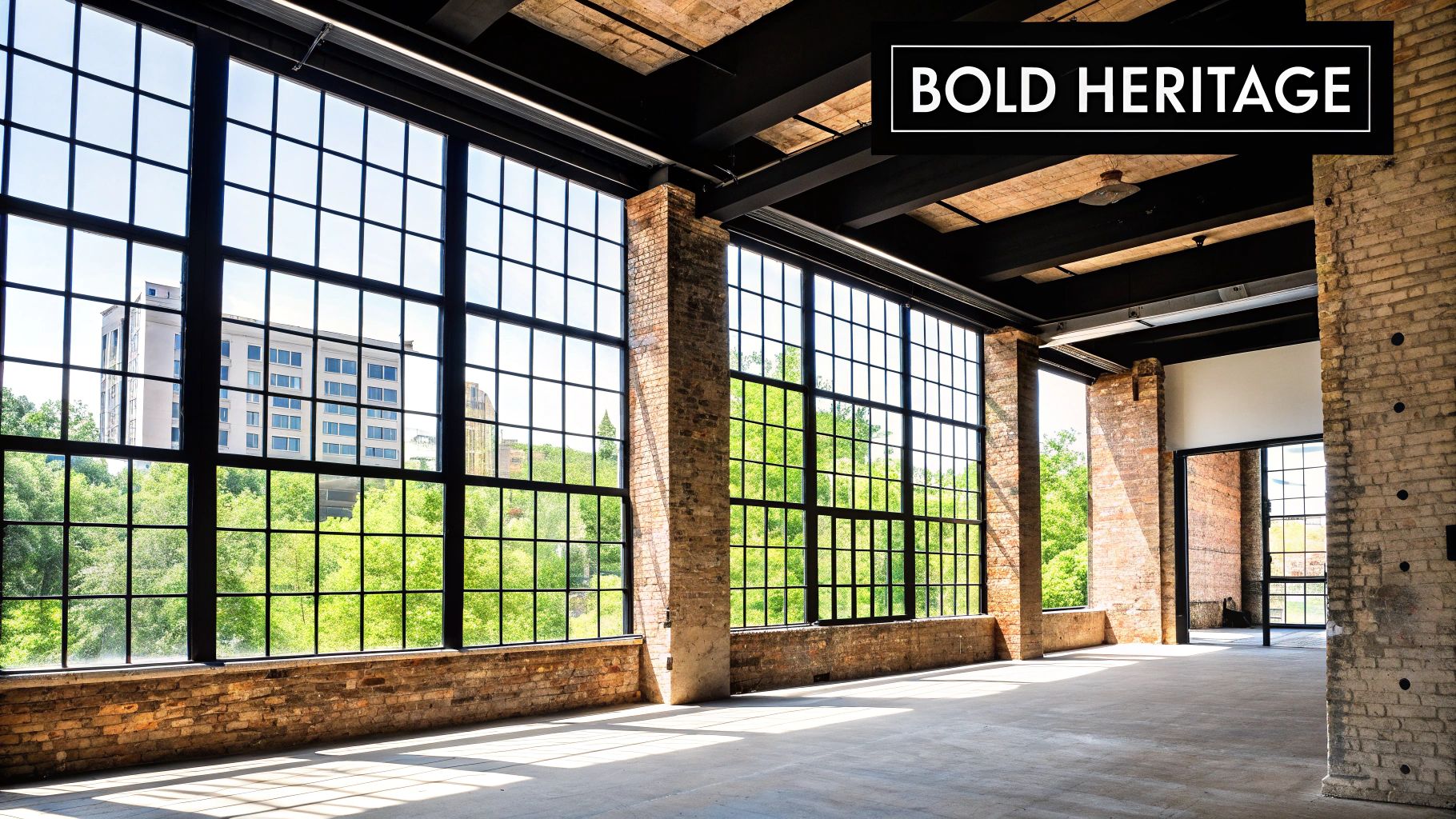
Industrial style windows, with their geometric lines and utilitarian aesthetic, have become a popular design choice. Originally used in factories and warehouses in the early 20th century, these windows now add a touch of history and architectural flair to modern homes and commercial spaces.
Their steel or aluminum frames, arranged in a grid pattern with multiple glass panes, are a defining feature. These frames, often finished in black or dark gray, enhance their industrial look. Thin sightlines maximize natural light and offer expansive views.
Often extending from floor to ceiling, these windows dramatically connect indoor and outdoor spaces. This raw, unfinished look, echoing their industrial origins, is a key part of their charm.
The Rise of Industrial Chic
The growing popularity of industrial style windows can be linked to the adaptive reuse of old industrial buildings. Urban areas, like SoHo in New York City, and projects like the Tate Modern in London, exemplify this trend. The High Line in New York City, built on a former elevated railway, also showcases this aesthetic.
As these renovated spaces became sought-after, the industrial aesthetic, including the windows, gained momentum. Architects like Tom Kundig have championed this style, incorporating industrial elements into modern designs. Companies like Crittall Windows and Hope's Windows, Inc., along with organizations like the Steel Window Association, have also contributed to their popularity and refined design.
Features and Benefits:
- Distinctive architectural character: Industrial style windows immediately create a unique style.
- Durability and longevity: Steel and aluminum frames provide exceptional strength and long-lasting performance.
- Compatibility with diverse interior styles: These windows complement various aesthetics, from minimalist to rustic.
- Strong visual framing of exterior views: The grid pattern enhances the scenery beyond.
- Historical authenticity with modern performance: They offer a classic look with modern energy efficiency.
Pros and Cons:
Pros:
- Durability and longevity
- Distinctive architectural character
- Compatible with diverse interior styles
- Strong visual framing of exterior views
- Historical authenticity with modern performance
Cons:
- Higher cost: Expect a greater investment compared to standard windows.
- Potential for thermal bridging: Metal frames can conduct heat, potentially affecting energy efficiency.
- Cleaning: Multiple panes require more cleaning effort.
- Weight: These windows can be heavy, requiring appropriate structural support.
Tips for Implementation:
- Thermally broken frames: Improve energy efficiency and reduce condensation.
- Powder-coated finishes: Enhance durability and weather resistance.
- Maintain proper sealants: Prevent air leakage and maintain energy efficiency.
- Pair with exposed brick or concrete: Create a cohesive industrial look.
You might be interested in: Our Products to explore various window options.
By considering these factors and implementing these tips, you can successfully integrate industrial style windows into your projects. Achieve a perfect blend of historical charm and modern functionality.
3. Smart Windows Technology
Smart windows represent a major advancement in window technology, shifting from static panes to dynamic, controllable elements within a building's automation system. These windows utilize technologies like electrochromic glass, embedded sensors, and connectivity to adjust tint, transparency, and insulation. This approach combines traditional architecture with the Internet of Things (IoT) and sustainable building practices.
Smart windows achieve dynamic functionality through dynamic glass, which changes opacity based on electrical signals. Integrated sensors for light, temperature, and occupancy enhance responsiveness, allowing automatic reactions to changing conditions. This can lead to significant energy savings, with studies showing 10-20% reductions in HVAC costs, and improved occupant comfort through light and heat control.
Many systems offer smartphone or voice control, automated opening and closing, and security monitoring, integrating windows with building management systems. Real-world examples include The Edge building in Amsterdam and Seattle's Bullitt Center. View Dynamic Glass is found in airports, and SageGlass is used in educational facilities like Chabot College. These projects showcase the technology's impact.
The increasing use of smart windows is partly due to companies like View, Inc., SageGlass, Halio, Velux Active with Netatmo, and Tesla Solar with their integrated solutions. These companies have developed and refined the technology, expanding its applications. You might be interested in: Our site's pages for window and door options.
Smart windows earn their spot on this list due to their impact on building performance and occupant experience. However, there are potential drawbacks. The initial cost can be high, and malfunctions can occur. Professional installation and maintenance are crucial, and some features require continuous power. Rapid technological advancement also creates a risk of obsolescence.
Despite these challenges, the benefits often outweigh the risks, especially for new construction or renovations. Here are some tips for those considering this technology:
- Prioritize rooms with intense sun exposure
- Ensure compatibility with existing home automation
- Choose systems with manual overrides
- Look for comprehensive warranties
- Ensure suitability for your climate
4. Passive House Windows
Passive House windows are more than just a modern trend; they represent a significant leap forward in window technology. These windows answer a growing demand for sustainable building practices and high-performing structures that prioritize energy efficiency and comfort. Designed to meet the strict criteria of the Passive House standard, a rigorous building certification, they dramatically reduce energy consumption while enhancing occupant well-being. This results in lower heating and cooling bills, a smaller environmental impact, and a healthier living space.
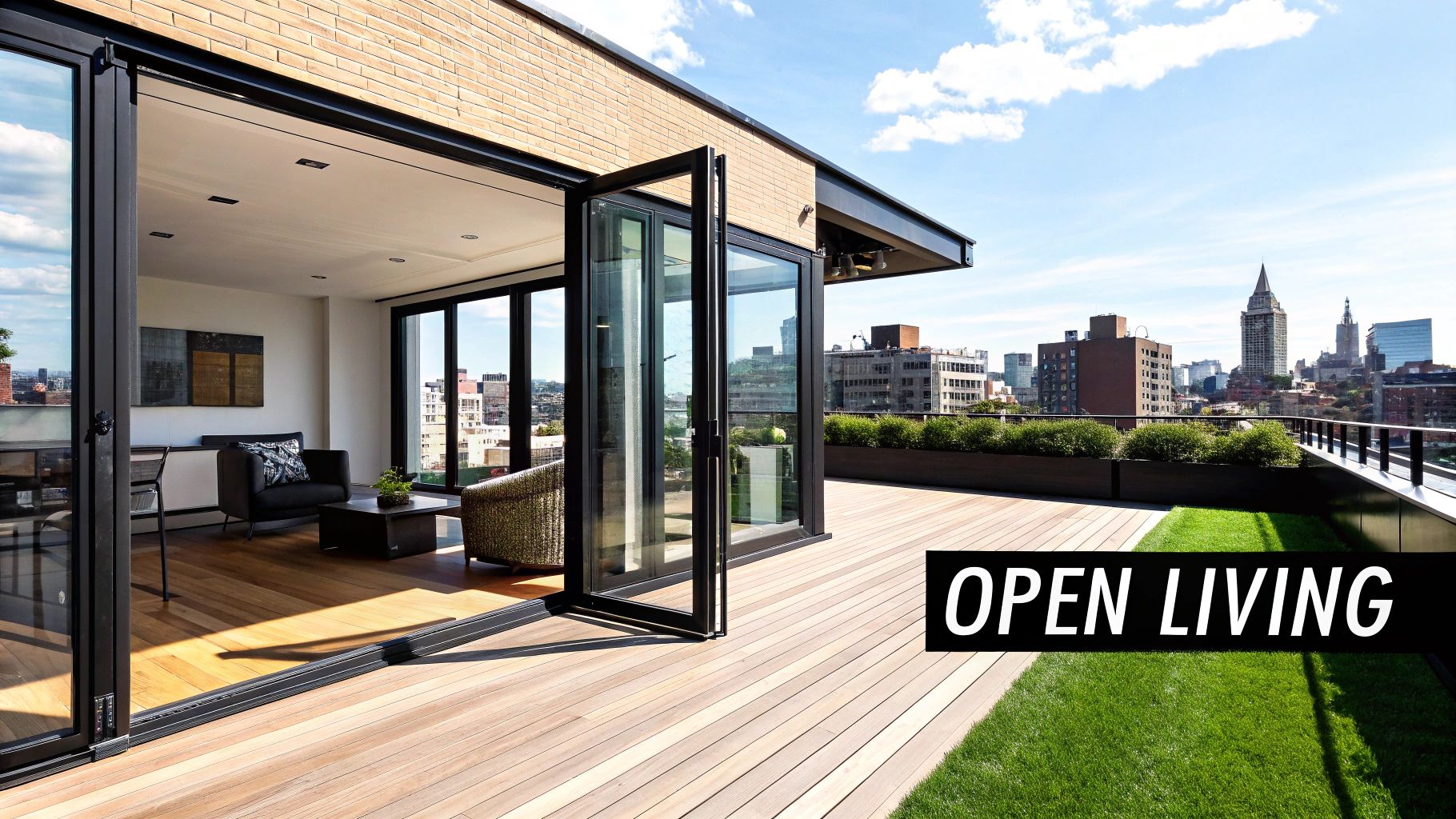
The secret behind Passive House windows lies in their meticulous design and construction. Triple-glazed glass filled with inert gas significantly reduces heat transfer. Super-insulated frames, often made of wood, fiberglass, or composite materials, minimize thermal bridging, which is the transfer of heat through the frame itself. Multiple layers of weather sealing and airtight installation techniques create a robust barrier against the elements. These features combine to achieve incredibly low U-values, a measure of heat transmission, often below 0.15 W/m²K, indicating exceptional insulation.
Key Features & Benefits
- Triple-glazed glass with inert gas fills: Offers superior insulation and minimizes heat loss.
- Super-insulated frames: Reduces thermal bridging and improves overall window performance.
- Multiple weather sealing layers: Prevents drafts and air leakage, keeping your home comfortable.
- U-values below 0.15 W/m²K: Represents exceptional thermal performance, significantly reducing energy needs.
- Strategic placement for solar gain: Optimizes natural heating during the winter months.
- Airtight installation with thermal breaks: Eliminates cold spots and prevents condensation buildup.
Pros and Cons of Passive House Windows
Here's a breakdown of the advantages and disadvantages:
| Pros | Cons |
|---|---|
| Exceptional thermal performance (up to 70% energy savings) | Higher initial investment (30-50% premium) |
| Elimination of cold drafts and condensation | Heavier units requiring robust installation |
| Superior sound insulation | Limited opening styles due to airtightness |
| Reduced carbon footprint | Specialized installation expertise required |
| Long-term energy cost savings | |
| Consistent interior temperature |
Real-World Applications and Implementation Tips
The effectiveness of Passive House windows can be seen in buildings like the Cornell Tech Residential Tower in NYC and Brock Commons at UBC in Vancouver. These projects highlight how these windows contribute to ambitious energy-saving goals.
Considering Passive House windows for your project? Here are some helpful tips:
- Calculate long-term energy savings: Evaluate the long-term return on investment to justify the upfront cost.
- Use certified Passive House components: Ensure compliance with Passive House standards for optimal performance.
- Ensure proper installation: Thermal bridge-free mounting is crucial for maximizing energy efficiency.
- Consider orientation and shading: Optimize solar gain and minimize overheating during summer months.
- Maintain ventilation systems: Prevent moisture issues and maintain a healthy indoor air quality.
The Passive House Institute (PHI) has played a key role in developing and promoting the Passive House standard. Manufacturers like Zola Windows and Intus Windows are at the forefront of producing high-quality Passive House windows. Other notable manufacturers include Alpen High Performance Products and European companies like Internorm and Optiwin.
Passive House windows are a smart investment for anyone seeking energy efficiency, comfort, and sustainability. While the initial cost may be higher, the long-term advantages in terms of energy savings, a better indoor environment, and a reduced carbon footprint make them a compelling option for future construction projects.
5. Folding/Accordion Window Walls
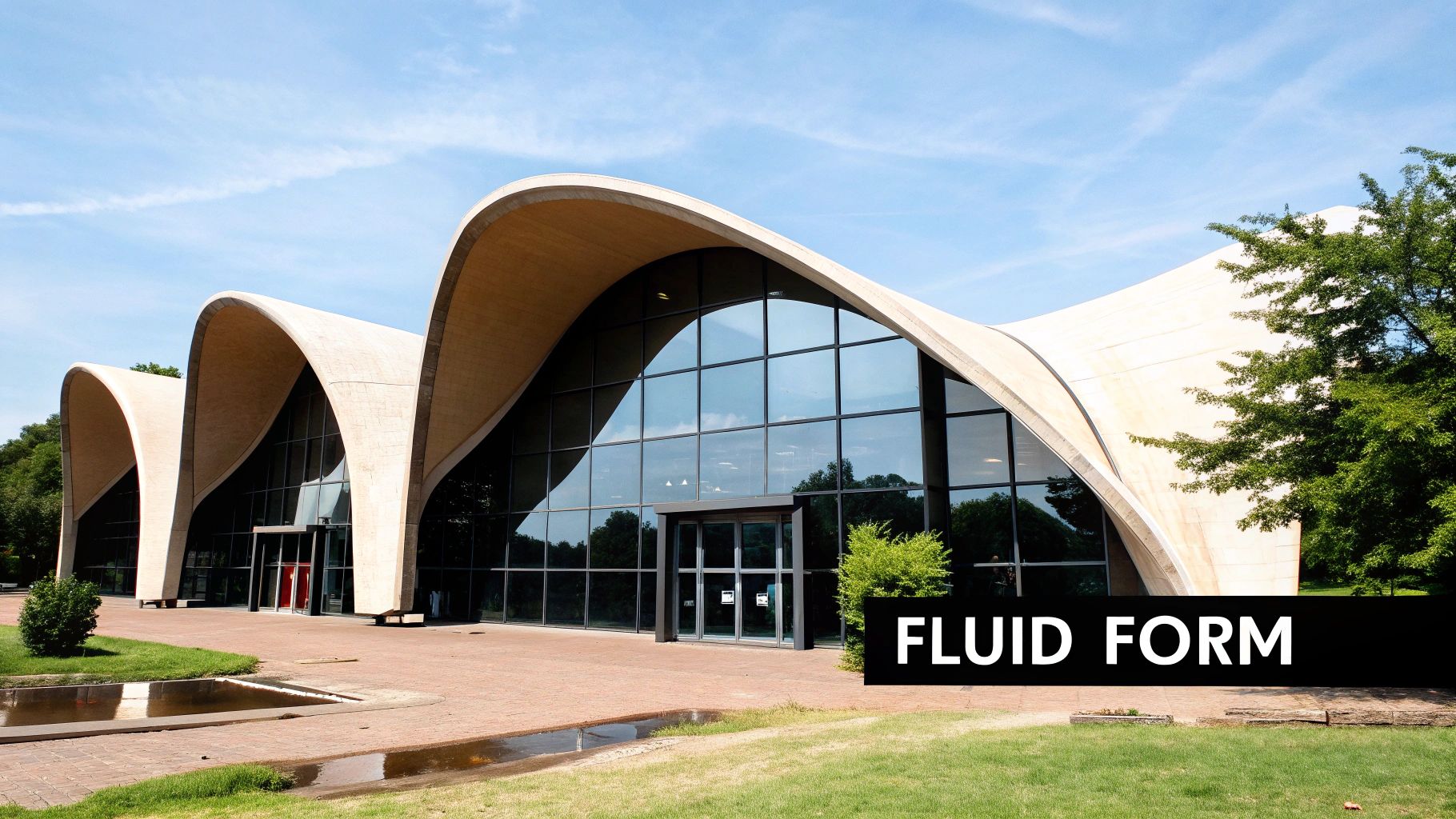
Folding/accordion window walls are changing the game in contemporary window design. Their ability to dramatically transform spaces and redefine indoor-outdoor living earns them a spot on this list. These systems, made up of multiple glass panels hinged together, operate on top and bottom tracks. They fold and stack neatly to one side, creating expansive, unobstructed openings.
This design allows for a near-complete merging of interior and exterior spaces. It effectively expands your living area and brings the outdoors in. This innovative approach is perfect for homeowners looking to maximize their space and enjoy the beauty of their surroundings.
The concept has come a long way from basic folding partitions. Advances in engineering and materials science have resulted in highly sophisticated systems. These systems boast robust weathertight seals, durable hardware, and large, full-height glass panels. They are capable of withstanding a variety of weather conditions, ensuring long-lasting performance and reliability.
Companies like NanaWall Systems, LaCantina Doors, Centor, and Solar Innovations have popularized these systems. They have pushed the boundaries of design and functionality, offering a wide range of options for homeowners. This rise in popularity is fueled by the growing trend toward open-plan living and a desire for closer connections with nature, particularly in temperate climates like California.
Examples of Folding/Accordion Window Walls in Action
Imagine a luxury beachfront home in California. The entire wall facing the ocean disappears with a simple push. This transforms the living room into an extension of the beach, creating a breathtaking and seamless connection with the outdoors.
Picture an indoor-outdoor restaurant or café. The façade opens completely, creating a vibrant street-side atmosphere. These are just a couple of examples of how folding/accordion window walls create dynamic and adaptable spaces.
Contemporary urban rooftop terraces and commercial spaces with courtyard access are other ideal applications. They offer a unique way to connect with the outdoors while maximizing space and functionality.
Features and Benefits
-
Seamless Indoor-Outdoor Transitions: Create a fluid connection between inside and outside, expanding living areas and enhancing the feeling of spaciousness.
-
Maximized Opening Width: Achieve up to 100% opening width, allowing for unobstructed views and excellent ventilation.
-
Versatile for Different Weather Conditions: When closed, these systems offer excellent weather protection. The folding feature allows for adaptable configurations based on climate and personal preference.
-
Enhanced Entertainment Spaces: Ideal for flexible spaces for entertaining and social gatherings, blurring the lines between indoors and outdoors.
-
Increased Perceived Square Footage: Visually expands the perceived size of a room by connecting it with the outdoor space.
-
Improved Natural Ventilation: Facilitates cross-ventilation, reducing the need for air conditioning and creating a healthier indoor environment.
Pros and Cons
Pros: Creates seamless indoor-outdoor transitions, maximizes opening width, versatile for various weather conditions, enhances entertainment spaces, increases perceived square footage, and improves natural ventilation.
Cons: Higher cost than traditional windows or doors, requires substantial structural support, more complex maintenance of tracks and hardware, less energy efficient than fixed walls, and visible floor tracks can be a tripping hazard.
Tips for Implementation
-
Drainage: Ensure adequate drainage in the bottom track to avoid water buildup and potential damage.
-
Accessibility: Consider low-threshold options for seamless transitions between indoor and outdoor spaces, especially for wheelchair accessibility.
-
Glass Selection: Choose the right glass package based on your climate to maximize energy efficiency and comfort.
-
Furniture Layout: Carefully plan your furniture arrangement to allow for the operation of the folding panels and maximize usable space.
-
Maintenance: Regular maintenance of the tracks and hardware is crucial for smooth and dependable operation.
Folding/accordion window walls are a significant step forward in window design. They offer a unique and compelling way to connect with the outdoors. While they come with a higher price and require careful planning for structural support and maintenance, their transformative effect on a space makes them a valuable investment. They are perfect for those wanting a genuinely seamless indoor-outdoor experience.
6. Curved and Organic Window Designs
Curved and organic window designs represent a striking shift away from traditional window construction. Instead of rigid, rectangular shapes, these designs embrace flowing, natural forms. This innovative approach uses advanced glass bending and manufacturing techniques to create soft, undulating lines that contrast beautifully with the typical angularity of buildings. The result is a powerful visual statement, transforming windows from purely functional elements into captivating architectural centerpieces. This style’s growing popularity comes from its ability to create unique spatial experiences and a harmonious connection with nature, aligning perfectly with the principles of biophilic design.
These designs feature custom-curved or bent glass, often implemented with frameless or minimally framed systems to highlight the fluid, non-rectangular forms. The degree of transparency and texture can vary greatly, allowing for extensive customization to meet the unique needs of any project. These windows can even be seamlessly integrated with curved wall systems, further blurring the boundaries between the built environment and the natural world.
Examples of Curved Glass in Architecture
The Fondation Louis Vuitton in Paris, designed by Frank Gehry, exemplifies the dramatic impact of curved glass. Its billowing, sail-like facade, made up of numerous curved glass panels, creates a dynamic interplay of light and shadow, transforming the building into a sculptural masterpiece. The Harpa Concert Hall in Reykjavik, Iceland, similarly utilizes geometric, curved glass panels to create a captivating, crystalline structure that reflects the city and harbor. Zaha Hadid Architects, known for their fluid and dynamic architectural style, often incorporate flowing window designs that enhance the sense of movement and organic form in their projects. Even on a smaller scale, features like the spiral glass staircases seen in many Apple Stores showcase the elegance and visual appeal of curved glass.
Benefits and Drawbacks of Curved Glass
Curved and organic window designs offer several advantages.
- Create unique architectural statements, softening the hard edges of buildings.
- Offer distinctive views and introduce unique light patterns, enriching interior spaces.
- Harmonize with organic landscape features, enhancing the biophilic connection.
- Promote a sense of well-being for occupants.
- Offer potential for improved acoustics due to the non-parallel surfaces.
However, these benefits come with certain considerations.
- Cost: Curved glass is significantly more expensive than standard windows due to complex manufacturing and installation. Limited standardization means most projects require custom production, adding to the expense.
- Window Treatments: Designing effective window treatments for curved glass can be challenging and requires specialized solutions.
- Replacement: If a replacement is needed, sourcing the specialty glass will be complex and costly.
Practical Tips for Incorporating Curved Glass
For those considering curved glass, several practical tips are essential.
- Collaborate with experienced glass fabricators early in the design process.
- Carefully consider the structural implications of supporting curved glass.
- Utilize 3D modeling to visualize light patterns and the overall aesthetic effect.
- Strike a balance between statement pieces and functional areas.
- Plan for custom window treatments well in advance.
You can explore more on this topic in our guide covering related window and door subjects.
Pioneers in Curved Glass Design
Visionaries like Frank Gehry, Zaha Hadid Architects, Santiago Calatrava, and companies specializing in curved architectural glass, such as Saflex and Cricursa, have been instrumental in advancing the use of curved glass in architecture. Their work continues to push the boundaries of what’s possible, inspiring innovative applications of this dynamic design element.
7. Indoor/Outdoor Kitchen Windows: Blurring the Lines Between Inside and Out
Indoor/outdoor kitchen windows are changing how we experience our kitchens and outdoor spaces. They're more than just windows; they're functional portals, blending indoor and outdoor living for better entertaining, cooking, and socializing. These special window designs turn a static wall into a dynamic hub, earning a spot on our list of contemporary window must-haves.
The core idea is to create a pass-through between the kitchen and an outdoor area, like a patio, deck, or terrace. This is done using various window styles, such as bi-fold, awning, or sliding pass-through windows, often with counter extensions that run from inside to outside. It's like extending your kitchen countertop to create an outdoor bar or serving area.
This trend is especially popular in places with pleasant climates, like Southern California, where indoor/outdoor living is highly valued. Custom home builders in these areas, along with features on HGTV renovation shows, have boosted the popularity of these designs. Window manufacturers like Marvin (with their Signature Ultimate Lift and Slide), Pella (Architect Series pass-through windows), and Andersen (Folding Outswing Door systems) also offer innovative products for this growing demand.
Features and Benefits
Indoor/outdoor kitchen windows offer a range of features for both practicality and style:
- Pass-Through Functionality: Bi-fold, awning, or sliding windows create a convenient serving hatch.
- Countertop Extensions: Create a continuous flow between indoor and outdoor countertops for prepping and serving food.
- Weather-Resistant Materials: Materials like aluminum, fiberglass, and treated wood ensure durability.
- Integrated Screens: Keep bugs out while allowing fresh air in.
- Easy-Clean Surfaces: Surfaces are designed for quick cleanups in food prep areas.
- Outdoor Bar Seating: Often combined with outdoor bar seating for a relaxed entertaining space.
Pros and Cons
Let's weigh the advantages and disadvantages:
| Pros | Cons |
|---|---|
| Dedicated service area for outdoor dining | Weather limitations in harsh climates |
| Effortless entertaining and meal service | Requires careful waterproofing |
| Improved workflow for outdoor cooking | More complex installation than standard windows |
| Enhanced social connection | May require custom cabinetry and countertops |
| Maintained climate control | Increased maintenance at the indoor/outdoor junction |
Real-World Examples
Here's how these windows are used in different settings:
- California Coastal Homes: Connecting kitchens to ocean views and outdoor dining.
- Urban Rooftop Terraces: Creating convenient bar areas for entertaining.
- Modern Farmhouses: Linking kitchens to gardens and simplifying outdoor dining.
- Boutique Hotels: Providing stylish bar service in outdoor pool or lounge areas.
Tips for Implementation
Consider these points for a successful installation:
- Precise Counter Height Alignment: Ensure a seamless transition between indoor and outdoor counters.
- Weather-Resistant Transition: Use durable, weatherproof materials where indoor and outdoor spaces meet.
- Wind Direction: Account for wind to prevent interference with window operation.
- Adequate Lighting: Install enough lighting for safe and pleasant evening use.
- Easy Operation: Choose hardware and window styles that are easy to open and close, even with full hands.
By thinking through these factors, you can create a truly enhanced indoor/outdoor living experience with a kitchen window that's much more than just a window to the outside.
8. Geometric Pattern Windows
Geometric pattern windows offer a fascinating blend of traditional craftsmanship and contemporary design. Their unique ability to transform light and space earns them a spot on this list. Unlike standard windows, these designs use abstract geometric shapes – triangles, hexagons, squares, and others – to create visually appealing displays while still providing light and privacy.
These windows achieve their distinctive look through a combination of elements. Precisely cut glass pieces are arranged within sleek metal frames, often aluminum or steel, reflecting the clean lines of modern architecture. While vibrant colors can be used, the current trend favors clear or lightly tinted glass, highlighting the interplay of light and shadow. This minimalist style lets the geometric patterns stand out, producing dynamic light patterns that change throughout the day.
The growing popularity of geometric pattern windows is partly due to a renewed interest in handcrafted design and a growing appreciation for custom architectural features. Influential artists like Sigmar Polke, known for his stained-glass-like creations, and Olafur Eliasson, with his captivating geometric light installations, have helped pave the way for broader acceptance of geometric abstraction in architecture. Gerhard Richter's stained glass windows for Cologne Cathedral offer a modern take on this traditional art form, as does the innovative work of contemporary glass studios like Bullseye Glass and the architectural glass art of Brian Clarke.
Real-World Applications
-
Modern Homes: Geometric pattern windows can become striking focal points in minimalist interiors, adding artistic flair without overpowering the space. Picture a large triangular window casting shifting light patterns across a living room wall.
-
Commercial Spaces: Tech company offices and modern museums frequently incorporate large-scale geometric window installations to create unique and memorable atmospheres. Consider the Museum of Modern Art's use of geometric window designs to enhance natural light and artistic expression.
-
Religious Buildings: Contemporary religious architecture increasingly embraces abstract geometric glass designs, providing a fresh perspective on traditional stained glass.
Pros and Cons
Pros:
- Distinctive Light Patterns: These windows create a captivating interplay of light and shadow that evolves throughout the day.
- Privacy with Light: They provide privacy while still allowing natural light to filter through.
- Personalized Expression: They offer a unique opportunity to customize a building's architectural style.
- Functional Art: They serve as both a beautiful art piece and a functional window.
- Modern Aesthetic: They maintain a sleek, modern appearance while adding warmth and visual interest.
Cons:
- Higher Cost: They are typically more expensive than standard windows due to the custom manufacturing process.
- Complex Installation: Installation requires specialized expertise.
- Limited Views: Depending on the specific design, they may partially obstruct views of the outside.
- Maintenance: They can be more difficult to clean than standard windows.
- Resale Value: The distinctive design may not appeal to all potential buyers.
Tips for Implementation
- Strategic Placement: Use geometric pattern windows as focal points, rather than overusing them throughout the building.
- Sun Path Consideration: Study the sun's path to maximize light effects and prevent excessive heat gain.
- Balance and Privacy: Carefully consider the balance between privacy needs and desired light levels.
- Professional Collaboration: Work with skilled glass artists and installers to ensure quality craftsmanship.
- Backlighting: Think about adding LED backlighting to accentuate the window's visual impact at night.
By carefully planning the design, placement, and practical aspects, geometric pattern windows can significantly enhance the beauty and functionality of any space. They bring a touch of artistry and unique character to modern architecture.
9. Corner Windows: Defying Gravity With Glass
Corner windows offer a dramatic shift from traditional window design. They create a striking architectural element that seamlessly blends indoor and outdoor spaces. By removing corner posts and using glass-to-glass connections, these windows provide unobstructed panoramic views and fill rooms with natural light. This design, championed by modernist architects like Frank Lloyd Wright and Ludwig Mies van der Rohe, remains a key feature of contemporary architecture. It signifies a dedication to open, light-filled living.
The fundamental idea behind a corner window is simple yet effective: create a continuous flow of glass around a building’s corner. This is typically done at a 90-degree angle, although other angles are possible. Eliminating the visual barrier of a traditional corner post blurs the lines between inside and out.
Consider iconic examples like Wright's Fallingwater, where cantilevered corner windows highlight the home's connection with the surrounding waterfall and forest. Another example is Mies van der Rohe's Farnsworth House, a minimalist glass structure that appears to float above the ground. Its transparent corners showcase the surrounding landscape. Modern cliff-side homes and urban penthouses often use this design to maximize stunning views.
Engineering Meets Aesthetics
The true marvel of corner windows lies in the combination of engineering and aesthetics. While early examples relied on innovative structural techniques, modern projects leverage advances in structural glass systems. Companies like Vitrocsa offer cutting-edge solutions. High-performance glazing is also key. These advancements allow for larger glass expanses with minimal framing, achieving a nearly frameless look while maintaining structural integrity and thermal performance.
Features and Benefits
-
Uninterrupted Panoramic Views: The signature feature, providing expansive views beyond traditional window frames.
-
Abundant Natural Light: Maximizes daylight, creating brighter interiors and reducing the need for artificial light.
-
Enhanced Spatial Perception: Creates a feeling of openness and makes rooms feel larger, particularly beneficial in smaller spaces.
-
Distinctive Architectural Statement: Adds a modern and stylish touch, enhancing both curb appeal and interior design.
-
Floor-to-Ceiling Installations: Often installed floor-to-ceiling, further strengthening the connection with the outdoors.
-
Operable Options: Can be designed as fixed or operable windows, offering ventilation and flexibility.
Pros and Cons
| Pros | Cons |
|---|---|
| Expansive, wrap-around views | Complex structural needs and increased costs |
| Elimination of visual barriers | Potential for thermal bridging |
| Distinctive architectural element | More difficult weatherproofing at corner junctions |
| Enhanced sense of space and openness | May require specialized glass coatings to manage heat gain |
| Increased natural light from multiple angles |
Tips for Implementation
-
Structural Considerations: Thoroughly analyze structural load paths and work with structural engineers specializing in glass construction.
-
Energy Efficiency: Focus on high-performance glass with low-E coatings and insulated frames to minimize heat transfer.
-
Solar Heat Gain: Account for potential solar heat gain from multiple directions with appropriate shading solutions.
-
Waterproofing: Pay careful attention to waterproofing details at corner junctions to prevent water damage.
-
Furniture Layout: Plan furniture placement to maximize views without blocking light or disrupting the flow of space.
Corner windows are more than just a stylistic choice. They reflect a conscious architectural decision to embrace light, space, and the natural world. While they demand careful planning and execution, the visual impact and improved living experience make them a valuable addition to any modern home. They are a testament to how architectural innovation can transform our interaction with the built environment.
10. Sustainable Window Systems
Sustainable window systems represent a significant advancement in modern window design. They go beyond simple aesthetics and energy efficiency to embrace a more holistic, environmentally responsible approach. These systems consider a window's entire lifecycle, from material sourcing to disposal and recycling. This minimizes environmental impact and maximizes resource efficiency. With growing climate concerns and stricter building regulations, sustainable window systems are becoming essential for responsible building design.
What makes these systems stand out? Several key features contribute to their sustainability. Renewable, recycled, or locally-sourced frame materials—like Kebony modified wood or Accoya wood—reduce reliance on virgin resources and lower transportation emissions. Low-embodied carbon manufacturing processes further lessen environmental impact. Triple or quadruple glazing options, coupled with dynamic solar management, optimize thermal and acoustic performance, leading to significant reductions in energy consumption for heating and cooling. Toxin-free materials and finishes create healthier indoor environments. End-of-life recyclability and the potential for cradle-to-cradle certification further ensure these windows contribute to a circular economy. For more information on window and door possibilities, explore our site's collection pages.
Benefits of Sustainable Window Systems
The advantages of sustainable window systems are numerous.
- Superior Performance: They provide excellent thermal and acoustic performance, resulting in long-term energy savings and improved occupant comfort.
- Environmental Responsibility: Their reduced environmental impact aligns with growing ecological awareness and can contribute to building certifications like LEED and WELL, potentially increasing property value.
- Future-Proofing: Choosing sustainable window systems prepares buildings for evolving regulations and promotes healthier indoor spaces.
Real-World Applications
Real-world projects demonstrate the effectiveness of these systems. The Bullitt Center in Seattle (Living Building certified), the Kendeda Building at Georgia Tech, and The Edge in Amsterdam (considered one of the world's most sustainable office buildings) highlight the role of sustainable window systems in achieving ambitious sustainability targets. The widespread adoption of these systems is also evident in numerous NZEB (Near Zero Energy Buildings) across the European Union.
Potential Drawbacks
It's important to acknowledge potential downsides. Sustainable window systems often have higher upfront costs than conventional options. Design choices might also be somewhat limited depending on the chosen materials and technologies. Verifying performance claims through third-party certifications and ensuring proper installation by qualified professionals is crucial for optimal performance. Balancing embodied and operational carbon is also key to maximizing environmental benefits.
Tips for Implementing Sustainable Window Systems
Here's a helpful guide for implementing sustainable window systems:
- Request EPDs: Request Environmental Product Declarations (EPDs) for transparent information on a product's lifecycle environmental impact.
- Consider Lifecycle Costs: Look beyond the initial price; factor in long-term energy savings and reduced maintenance.
- Verify Certifications: Look for certifications like Cradle-to-Cradle or Declare Label to confirm performance claims.
- Ensure Proper Installation: Correct installation is essential to realize the full performance benefits.
- Balance Carbon Impacts: Consider both embodied carbon (from manufacturing) and operational carbon (from energy use) over the window's lifespan.
Organizations like the Passive House Institute and the Living Building Challenge have championed sustainable window systems and fostered innovation in the field. Companies like Unilux, Sorpetaler, and Rehau are at the forefront of developing and manufacturing advanced sustainable window products. By carefully weighing the features, benefits, and potential challenges, homeowners, builders, and developers can make informed choices about integrating sustainable window systems into their projects and contribute to a more sustainable built environment.
10 Contemporary Window Designs: A Style Comparison
| Style | 🔄 Implementation Complexity | ⚡ Resource Requirements | 📊 Expected Outcomes | 💡 Ideal Use Cases | ⭐ Key Advantages |
|---|---|---|---|---|---|
| Minimalist Window Design | Moderate – requires precise, slim profiles | Moderate – quality materials with minimal framing | Enhanced natural light and seamless indoor–outdoor integration | Modern residences, urban high-rises, contemporary architecture | Timeless simplicity, clean views |
| Industrial Style Windows | Moderate – visible structural elements | High – durable steel/aluminum and robust supports | Bold urban character with sturdy, framed views | Loft conversions, urban industrial spaces, modern farmhouses | Robust aesthetics, lasting durability |
| Smart Windows Technology | Very High – integration of sensors and controls | Very High – advanced tech components and installation | Automated tinting, energy optimization, improved security | Futuristic homes, commercial smart buildings, tech-savvy environments | Adaptive control, significant energy savings |
| Passive House Windows | High – strict energy-efficiency standards | High – premium triple-glazing and insulated frames | Superior thermal performance, reduced drafts, energy savings | Eco-friendly buildings, Passive House-certified projects, cold climates | Exceptional insulation, sustainable performance |
| Folding/Accordion Window Walls | High – complex moving parts and structural alignment | High – multiple panels and heavy hardware required | Seamless indoor–outdoor transitions with expansive openings | Luxury residences, restaurants, entertainment spaces | Transformative design, versatile functionality |
| Curved and Organic Window Designs | Very High – custom fabrication and unique shapes | Very High – advanced glass bending and bespoke materials | Unique aesthetics with organic light patterns and artistic impact | Iconic landmarks, museums, high-end residences | Distinctive visual art and innovative design |
| Indoor/Outdoor Kitchen Windows | Moderate – tailored for service integration | Moderate – custom pass-through and countertop extensions | Improved connectivity between indoor kitchens and outdoor areas | Open-plan kitchens, entertaining zones, indoor–outdoor living spaces | Functional design, enhanced social interaction |
| Geometric Pattern Windows | High – precise custom configurations | High – specialized glass cutting and metal frameworks | Dynamic light play and artistic focal points | Modern offices, cultural institutions, bespoke residences | Customized artistry, unique privacy and visual interest |
| Corner Windows | Very High – demanding structural engineering | High – specialized installation and premium materials | Panoramic, unobstructed views with an expansive spatial feel | Luxury homes, office towers, architectural masterpieces | Uninterrupted vistas, modern elegance |
| Sustainable Window Systems | High – requires specialized eco-friendly processes | High – renewable materials and energy-efficient components | Superior energy savings, reduced carbon footprint, certification credits | Green buildings, eco-friendly developments, LEED projects | Eco-credentials, long-term efficiency, future-proofing |
Framing the Future: Your Guide to Choosing the Perfect Contemporary Window Design
From minimalist frames to smart technology and sustainable solutions, contemporary window design offers a diverse range of options to elevate any project. We've explored key styles like industrial-inspired windows, expansive folding walls, and eye-catching geometric patterns. We've also looked at the energy efficiency of Passive House windows and the seamless integration of indoor/outdoor spaces. Choosing the right window involves carefully balancing aesthetics, functionality, and budget.
Consider the architectural style of your property. Think about the amount of natural light you desire. Also, factor in the level of privacy and security you require.
Applying these concepts effectively requires careful planning.
Planning Your Window Project
Begin by assessing your existing windows and identifying areas for improvement. Research different window types and materials to determine which best suit your needs and budget. Consulting with an architect or window specialist can provide valuable insights. They can also ensure a seamless integration with your overall design.
The world of window design is constantly evolving. Smart windows with integrated technology, sustainable materials with enhanced energy efficiency, and customizable designs are shaping the future of the industry. Staying informed about these advancements will empower you to make informed decisions. You'll be able to choose windows that not only enhance your space today but also anticipate future needs.
Key Takeaways for Choosing the Right Windows
-
Prioritize Energy Efficiency: Opt for windows with high thermal performance to reduce energy consumption and lower utility bills.
-
Maximize Natural Light: Strategically placed windows can brighten your space and create a welcoming atmosphere.
-
Consider Functionality: Choose window styles that complement your lifestyle and provide the desired ventilation and accessibility.
-
Embrace Aesthetics: Select window designs that enhance the architectural style of your property and reflect your personal taste.
-
Plan for the Future: Invest in durable and adaptable window systems that will stand the test of time.
Ready to transform your space with stunning, high-quality contemporary windows and doors? Gladiator Window and Doors specializes in creating custom, extra-large sliding, pivot, bi-fold, panoramic, and folding windows and doors. We also create fully-loaded pergolas, all at the lowest prices in the USA. We offer unparalleled craftsmanship, the industry's best warranty, and a Best Offer Guarantee. This ensures you receive exceptional value without compromising on quality. Don't settle for ordinary windows when you can have extraordinary designs at unbeatable prices. Visit Gladiator Window and Doors today and discover the perfect window solutions to reimagine your view.

















